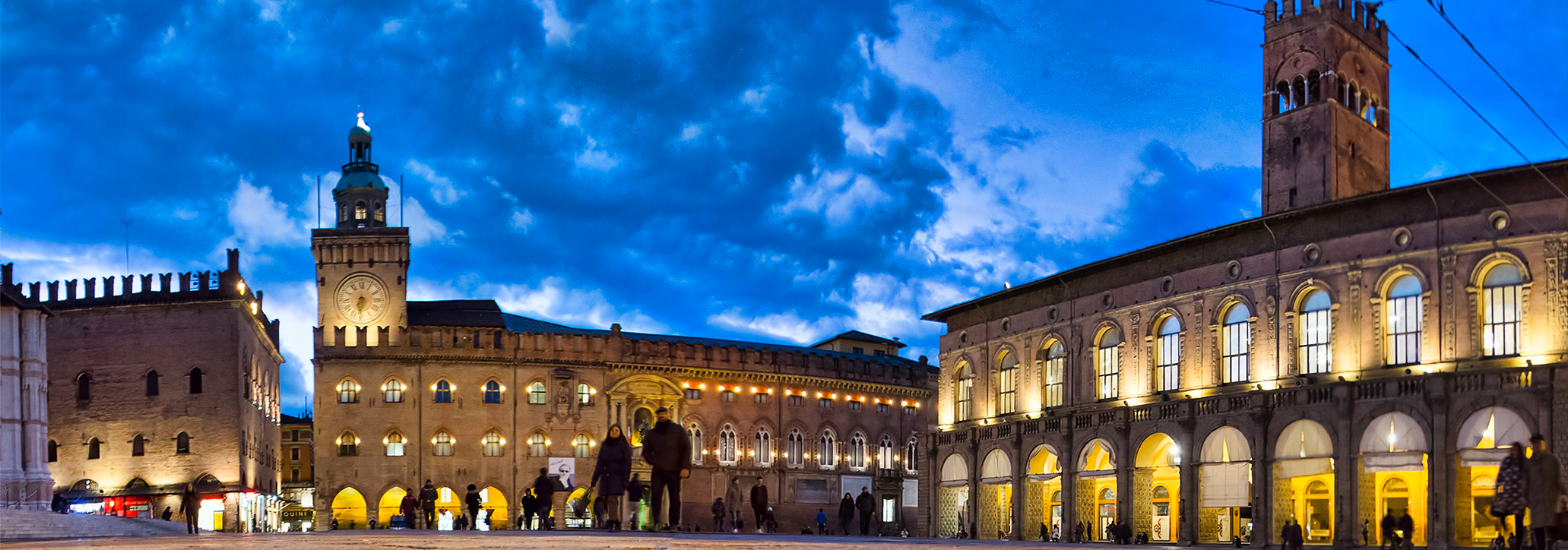
“God is Young! God is the Eternal One who has no time, but is able to renew and rejuvenate Himself and all things continually. The most distinctive attributes of the young are also His. He is young because He makes all things new and loves innovation; because he astonishes and loves astonishment; because He dreams and want us to dream.”
Pope Francis
Pope Francis
In the book God is Young (2018) based on his interview with Pope Francis, Tomas Leoncini noted that the courage, energy and creativity of young people, together with the wisdom and experience of the elderly, are the necessary conditions of making the world a better place. The importance of the relationship between the older and younger generation, particularly between grandparents and their grandkids, has become one of Pope Francis’ favorite topics. He said: “Old dreamers and young prophets are the way of salvation of our rootless society – two thrown-away generations who can save everyone”. (Catholic News Service, Crux, 23.03.2018).
In most modern societies, the dream of the world becoming a better place includes equal opportunities for physiological, psychological, and social development, and realizing values of good health, stable family life, conscientious and satisfying work, and responsible citizenship.
At the Italian bishops’ conference, Bishop Nunzio Gallantino emphasized that the Pope “offers a perspective to understand youth that goes beyond the latest studies or statistical research”. Nevertheless, as a sociologist I would like to refer to recent social research and studies that explore the most pressing problems of the young and the old - people who differ in their age.
Age is a universal characteristic of all living humans; it differentiates us and unites us. It is measured and categorized by number of years and cycles of life. The cycles or phases of life are described as infant, child, teenager, young adult, middle aged, and senior or elderly. They are connected with playing different roles within families (children, parents, and grandparents), and within the institutional settings of society more broadly (pupils or students and teachers; workers or employees; retirees or pensioners). Age categories are related to different needs and problems that are specific to them, but they are also dependent on each other to fulfill their needs and solve problems.
In families, when children are born they need to be given food, clothing, shelter; they have to learn how to behave in order to satisfy their needs, to learn the societal norms of interaction with other people; to discover and explore the world that surrounds them, and to learn skills and knowledge for how to deal with it.
Parents need to bring their children into the world and raise them, providing for the children’s needs; in order to achieve this, they need to work to obtain the means for maintaining the family; they teach children but also learn themselves.
There are various social institutions whose function is to satisfy the specific needs of various age categories (schools, workplaces, organizations). These institutions sometimes contribute to segregation, isolation, and conflicts between different age categories, young and old. However, these institutions are also places where people belonging to different age categories (generations) meet and interact. There is an urgent need for their alliance and for cooperation that will encourage a high quality of care for frail young and old people, as well as build up supportive communities and institutions.
Biological and physical differences between children, adults, and the elderly are so visible that other, more subtle social and cultural factors are often ignored. Nevertheless, social attitudes that are built up around bodily changes related to the aging process have a profound impact on young and old people’s own attitudes, their mutual relationship, and the behavior of others toward them. A wide variety of relationships between young and old people throughout the world is linked to cultural differences. I will illustrate this with examples taken from American and European social studies.
In his book OUR KIDS: The American Dream in Crisis (2015), the renowned American social scientist Robert D. Putman presented findings of a study on the social and economic changes in the lives of American young people during the past three decades. The latest neurobiological research on brain development in young children has shown that early experiences and socioeconomic environment influence intellectual and emotional capacities (e.g., concentration, impulse control, mental flexibility, working memory, social sensitivity, self-control, conscientiousness, emotional stability) that are very important for life success. “Healthy infant brain development requires connecting with caring, consistent adults. …Research has shown that the foundation of … mathematical and verbal skills are acquired in the earliest years more effectively through informal interaction with adults than through formal training. The brain, in short, develops as a social organ, not an isolated computer. ” (Putnam 2015:110).
On the other side, so called “adverse childhood experiences” (physical or emotional abuse by adults, lack of affection, broken families, unstable and unresponsive caregiving, extreme stress and violence) can produce physiological and psychological changes in the child that create lifelong difficulties in learning and social behavior. James Heckman, the Nobel Prize-winning economist writes: “Early adverse experiences correlate with poor adult health, high medical care costs, increased depression and suicidal rates, alcoholism, drug use, poor job performance and social function, disability, and impaired performance of subsequent generations.” (Heckman 2012)
Putnam revealed a growing inequality in the distribution of income and wealth, as well as in opportunity for development and social mobility: “This growing gap between rich and poor is reflected in many other measures of well-being, including wealth, happiness, and even life expectancy.” (Putnam 2015:36) In contrast to the wealthy and well-educated upper class, a majority of children from lower classes are raised by a single mother or broken family, are deprived of good intensive parenting, encouraging self-reliance and independence, achieve lower educational attainment and more often drop out from school, tend to be socially isolated from larger community and social network. However, a different type of dysfunctional parenting appears within rich families: competitive, hyper-controlling “helicopter parents, who hover over their progeny all the way to college, subscribe to the belief – a neurosis, really – that a child cannot be out of an adult’s sight for one second.” (Will 2018: 23)
Exploring “what has been happening to kids in the past three decades – the families into which they’ve been born, the parenting and schooling they’ve received, the communities within which they’ve been raised” Putnam described “shattering the American Dream” of everyone having an equal opportunity to succeed on the basis of one’s own effort and skills.
The growing economic and social inequality in many advanced nations has diminished prospects for an alliance between the old and the young. Intergenerational solidarity, the recognition of common interests that need to be served by cooperation; a moral duty and obligation to help and support each other, as well as responsibility for the results of common action, is waning.
Demographic change in the modern world, which involves the rapid expansion of the population as a whole, has altered the age composition of the overall population. As the life expectancy for individuals has increased, the number of older people has been increasing faster than the total population. According to Encyclopaedia Britannica (1988: 331): “older people tend, on the average, to be comparatively disadvantaged, although individual variations are great. Their low status is indexed by their comparatively low rates of participation in the labour force and by their low average incomes. … Older people have less formal education and less recent education than younger people.” The authors conclude that despite the worsening health of older people, many of them carry on with occupational, social, and political activities. This is greatest among those who are in good health and belong to the upper socioeconomic class. “Contrary to the often-held theory of a one-way flow of contribution to older people, the flow of support between the aged parents and their adult offspring appears to be two-directional, from parent to child or from child to parent as need and opportunity dictate.” (ibid. 334)
Grandparents are playing an increasing role in their grandchildren’s lives, but it is different in upper and lower class families. Affluent and more educated grandparents mostly contribute money to their grandchildren, supplementing resources they are already receiving from their parents. Poor and less educated grandparents mostly donate time and serve as caregivers, replacing parents who are not able to care for their children. (See Putnam 2015: 132-133) These differences contribute to magnifying the class gaps within young and old people and reduce opportunities for alliance between them.
Awareness of the necessity, advantages, and mutually beneficial effects of solidarity and cooperation between young and old generations should lead to the questions: “How could constraints and obstacles to their alliance (such as inequalities) be overcome?” and “What are the ways to produce intergenerational solidarity, a feeling of responsibility and compassion, and a willingness to help each other?” There are various answers to these questions. Researchers are pointing out many alternative ways depending on conditions.
The Pew Research Center reported that in 1950, 21 percent of the US population lived in a multigenerational household, including grandparents and grandchildren. In 1980, such living arrangements diminished to 12 percent. However, in the 21st century it is trending up again: in 2016, 64 million people lived with multiple generations. Researchers suggested that multigenerational homes allow families to better share the cost of living, and the responsibilities for children and elderly care. According to the journal SSM-Population Health: “Multigenerational living arrangements might improve financial resources, buffer stress, reduce loneliness, enhance intellectual sharing, and generate structural social capital, thereby elevating the level of one’s health.” (Singletary 2018: A13) Living separately from children does not mean isolation from them. More than 80 percent of older people who have living children see one of them at least every week (see Encyclopaedia Britannica p. 333). There are various kinds of material, financial, and emotional support; for example: baby-sitting, care during an illness, help with shopping, housework and home repairs.
Solidarity, concern about living conditions and the needs of children and the elderly; those who are fragile, dependent, and defenseless, and a willingness to help them is highest – as the European Values Study showed – within the immediate family, and then with friends, colleagues, and neighbors. A weaker but more universal solidarity and commitment to help, based on feelings of compassion and moral duty, extends outside people’s inner circles toward larger global communities.
The future is the key orientation for the activity of the young. Old people place their virtues in the accumulated experience and memories of the past. Young people need to base the goals for their future on the knowledge of the past learned from the memories of elders. Old people place their hopes for the amendment of the past mistakes onto the activity of the younger generation in the future. For these reasons the alliance between young and old is necessary and desirable.
References
- The New Encyclopaedia Britannica, Vol.27. Chicago: The University of Chicago 1988.
- Pope Francis and Leoncini, Tomas. God is Young. Penguin Random House 2018.
- Putnam, Robert D. Our Kids: The American Dream in Crisis. New York: Simon & Schuster 2015.
- Singletary, Michelle. “A multigenerational home can strengthen you finances – and family bonds”. The Washington Post, 09.19.2018.
- Will, George F. “The plague of fear-based parenting”. The Washington Post, 09.20.2018.


